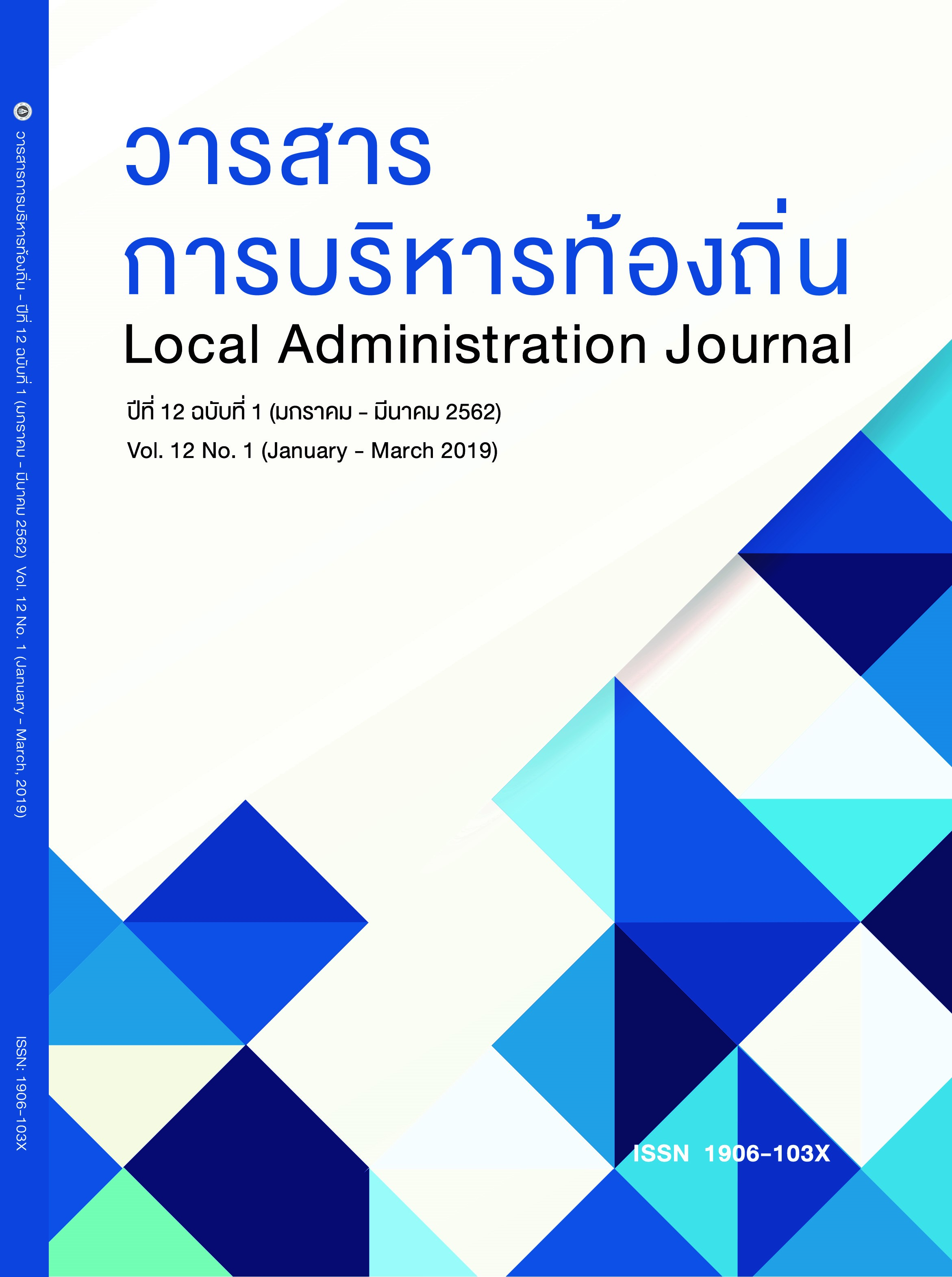Why should we invest in the Eastern Economic Corridor?
Keywords:
Eastern Economic Corridor (EEC), Documentary research, Social constructivist, Foreign direct investmentAbstract
The Eastern Economic Corridor has been applied from January 2018 and is developed from the former Eastern Seaboard which have been implemented for over thirty years. The Thai government attempts to move the “Detroit of the East” to the manufacturing paradise of Asia, designed to accommodate innovative industries and the Thailand 4.0 era. The EEC consists of the three Eastern provinces: Rayong, Chonburi, and Chachoengsao, aiming to set out infrastructure developments, generous inducements, and investment enablement. The government has set out three pillars including infrastructure developments, super-generous incentives, and investment facilitation in order to employ the EEC. It is said that the primary concern in the EEC zone is to accommodate the foreign investment in automotive, electronics, tourism, agricultural and biotechnology, logistics and aviation, biochemical, digital and medical services. This is a documentary research where the researcher studies the context of the EEC in the international investment dimension. In reviewing the literature, it is found that there is a scarcity in researching the EEC area focusing on the foreign direct investment. Therefore, this paper provides an analytical view on the opportunities for foreign trade and investment in Thailand. As of the researcher’s view, Thailand has high potential in attracting the investors since we have abundant natural resources and modern petrochemical industries.
References
Bailey, K. (1994) Methods of social research, 4th edition, New York: The Free Press.
Blaxter, L., et al. (1996) How to research, Buckingham: OUP.
Bryman, A. (2012) Social research methods, Oxford: Oxford University Press.
Creswell, J. W. (2007). Qualitative enquiry and research design: Choosing among five approaches. 2ed Edition. Thousand Oaks. CA: Sage
Creswell, J. (2009) Research design: Qualitative, quantitative, and mixed methods approaches. Los Angeles: Sage.
Crotty, M. (1998) The foundations of social research: Meaning and perspective in the research process, London: Sage Publications.
Du, X., & Lai, S. (2018) Financial distress, investment opportunity, and the contagion effect of low audit quality: Evidence from China, Journal of Business Ethics, vol. 147, no. 3, pp. 565-593.
Dunning, J. H., & Narula, R. (1993) Transpacific foreign direct investment and the investment development path: the record assessed, Columbia, SC: Center for International Business Education and Research, Division of Research, College of Business Administration, University of South Carolina.
Dunning, J.H. (2000). The eclectic paradigm as an envelope for economic and business theories of MNE
Activity. International Business Review, vol. 9. Pp.163-190.
Guba, E. G., & Lincoln, Y. S. (1994) ‘Competing paradigms in qualitative research’, in N. K. Denzin & Y. S. Lincoln (eds.), Handbook of qualitative research, pp. 105-117, Thousand Oaks, CA: Sage Publications.
Kindleberger, C. P. (1969) ‘The theory of direct investment’, in C. Kindleberger (ed), American business abroad, New Haven, CT: Yale University Press.
Maniam, B., & Chatterjee, A. (1998) The determinants of US foreign investment in India: Implications and policy issues, Managerial Finance, vol. 24, no. 7, pp. 53-62.
Miles, M. B., & Huberman, A. M. (1994) Qualitative data analysis: An expanded sourcebook, Thousand Oaks, CA: SAGE Publications.
Mogalakwe, M. (2006) The use of documentary research methods in social research, African Sociological Review, vol. 10, no. 1, pp. 221-230.
Payne, G., & Payne, J. (2004) Key concepts in social research, London: Sage Publications.
Pettinger, T. (2017). Factors that affect foreign direct investment (FDI). EconomicsHelp.org. Retrieved 16th April, 2018. (online) https://www.economicshelp.org/blog/15736/economics/factors-that-affect-foreign-direct-investment-fdi/
Ritchie, J., & Spencer, L. (2002) ‘Qualitative data analysis for applied policy research’, in The qualitative researcher’s companion, pp. 305-329, Thousand Oaks, CA: SAGE Publications.
Saunders, M., et al. (2009) Research methods for business students, 5th edition, England: Pearsons Education Limited.
Saunders, M., et al. (2012) Research methods for business students, 6th edition, England: Pearson Education Limited.
Scaperlanda, A. & R. S. Balough. (1983) Determinants of U.S. investment in the EEC: Revisited, American Economics Review, vol. 21, no. 3, pp. 381-390.
Sharmiladevi, J. C. (2017) Understanding dunning’s OLI paradigm, Indian Journal of Commerce and Management Studies, vol. 8, no. 3, pp. 47-52.
Salika. (2017) EEC, the future of Thailand (อีอีซี เดิมพันอนาคตประเทศไทย), Available: https://www.salika.co/2017/10/08/อีอีซี-เดิมพันอนาคตประเทศไทย [Retrieved 16th APril, 2018] (in Thai)
Published
How to Cite
Issue
Section
License
The copyright of all articles published in the Local Administration Journalis owned by the College of Local Administration, Khon Kaen University.



